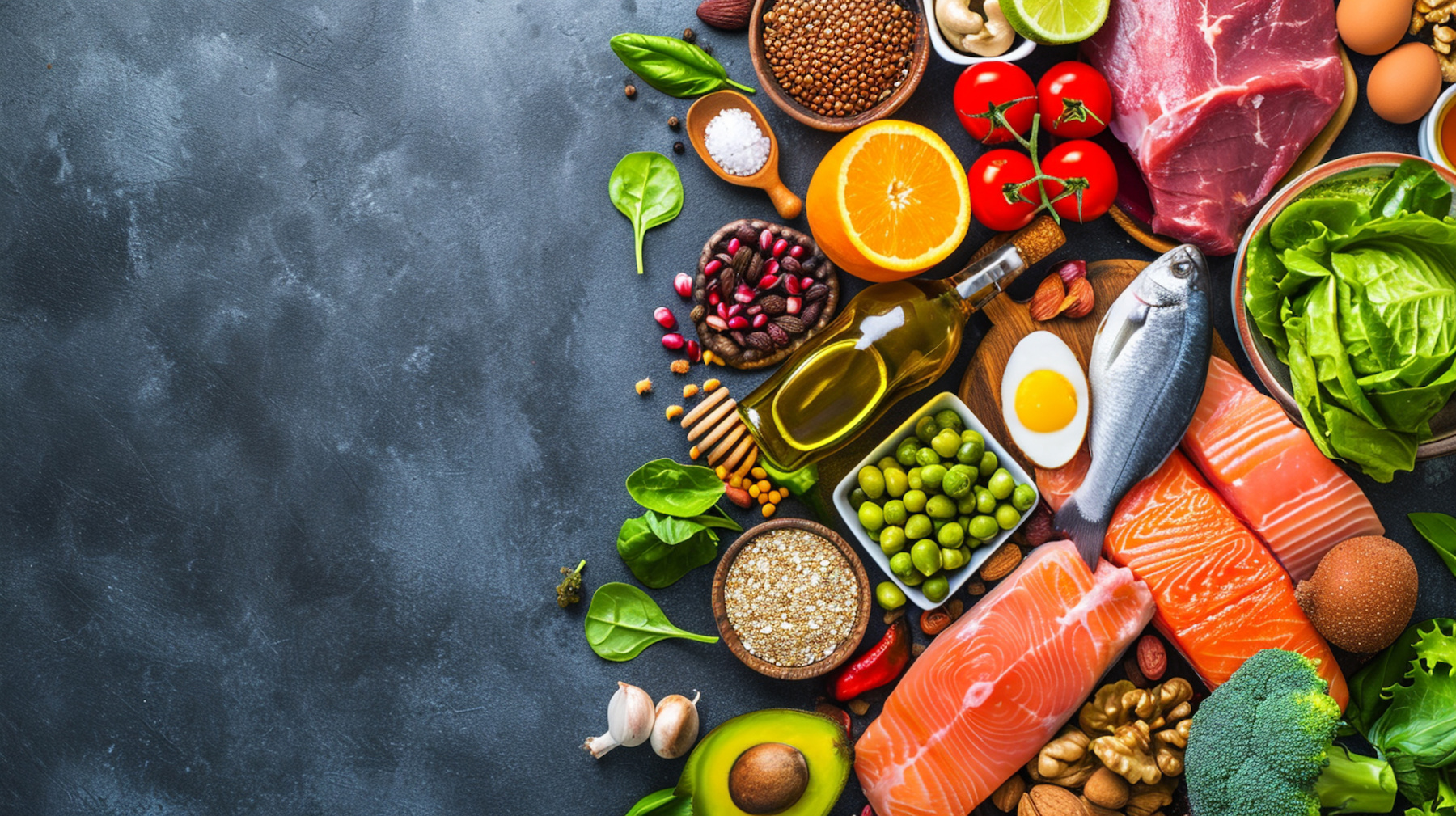

Let’s be honest – constipation isn’t the most glamorous thing to talk about. But did you know 4 million people in the US struggle with it? Since it’s a common GI complaint, it’s essential to understand how to find relief – because relief is possible!
What is Constipation?
Constipation, officially defined as less than 3 bowel movements a week, occurs when stool moves slowly through the gastrointestinal tract, becoming hard and dry. This makes it hard to expel the stool, leading to straining or feeling like you can’t get all the stool out. However, it is normal and optimal to have at least one bowel movement per day!
What Causes Constipation?
Constipation can occur from a variety of causes.
Lack of hydration. Water is essential to nearly every system in the body – your digestive system is no different. Water helps soften the stool and makes it easier to move through the intestines.
Not enough fiber in the diet. Plant fiber helps move waste through the digestive tract, easing bowel symptoms. If we don’t have enough, we can feel “clogged up”.
Immobility. Without moving our body, the digestive system can’t do its job as well. Your bowel needs movement to help stimulate it!
Overgrowths and imbalances in the GI tract. SIBO, or small intestine bacterial overgrowth, occurs when the bacteria in your small intestine are overgrowing. It can cause symptoms like constipation or diarrhea, depending on the type of SIBO. One specific type of SIBO is called IMO, or intestinal methanogen overgrowth (technically it is not SIBO as the overgrowth is not from archaea, which are not bacteria—the nomenclature has recently changed). IMO is methane dominant and can increase gas and unwanted GI symptoms. Learn more about SIBO and IMO in my blog series here.
Abdominal and pelvic concerns. Sometimes previous surgeries can cause adhesions or other anatomical changes to the body that affect the normal functioning of the digestive tract.
Testing To Get to the Cause of Constipation
When a patient comes in complaining of constipation, there are 3 tests we commonly perform to get to the root of the problem in functional medicine.
Stool study. With a stool study, we test for the presence of infection, inflammatory markers, efficiency of digestion and enzymes, and imbalances. A stool study can be very comprehensive and provide useful information to go over with your functional medicine provider.
Breath test. A breath test is easy to conduct and helps measure the amount of gas in your breath after consuming certain foods. Every 20 minutes, you blow into a test tube so see how much hydrogen and methane gas are present. This data helps measure what kind of imbalance may be present in your digestive system, such as SIBO or IMO.
Organic acids test. This is a urine metabolite test used to find any overgrowths that may be occurring in your body, such as yeast or fungal overgrowths, that may be contributing to your GI symptoms.
Imaging Studies and/or laparoscopy. If your constipation has an anatomical origin such as secondary to adhesions or obstructions, it may be necessary to do imaging studies such as a CT scan and/or MRI. However, the definitive answer on adhesions usually involves a surgical procedure to actually look at the intestines for adhesions release them at that time.
What Can I Do to Relieve Constipation?
The first step to constipation relief is adequate hydration. Because stool is 75% liquid, drinking more water helps keep it soft and easy to expel. Make it a goal to drink at least half your body weight in ounces each day of water – more if you’re active or the weather is hot.
Eat enough fiber. Dietary fiber is the roughage or bulk of plant materials that the digestive tract can’t absorb. This leaves the material intact while going through your intestines, supporting healthy digestion and bowel movement. While you’ve probably been told to “eat more fiber” before, a good goal is to aim to get 8-10 servings of plant foods each day by focusing primarily on vegetables.
You should also be aware of the different dietary fibers that can help: soluble and insoluble fibers.
Soluble fibers dissolve in liquid and form a gel-type substance. This type of fiber is found in foods such as peas, oats, citrus fruits, barley, flax, but also in supplemental forms such as PHGG (partially hydrolyzed guar gum), modified citrus pectin and psyllium for example. Psyllium is actually about 70% soluble and 30% insoluble.
Insoluble fiber increases stool bulk and helps with constipation. Food sources of insoluble fiber include nuts, beans, and some vegetables like potatoes, green beans, and cauliflower.
Eating a variety of high fiber foods, including those with both soluble and insoluble fiber, will help relieve constipation.
While eating enough fiber and whole foods will help considerably, sometimes food sensitivities and intolerances affect how your digestive system performs. If you notice symptoms like indigestion, bloating, diarrhea, gas, or stomach upset after eating certain foods, it may be time to talk with a health professional to rule out any food sensitivities or intolerances. An elimination diet may be suggested as a first step to see if symptoms subside when certain foods are removed from your diet.
Regular movement. Exercise is one of the best – and most underrated – ways to relieve constipation. Not only does movement help get things moving in the digestive tract, but it also decreases the amount of time it takes food to move through the digestive tract – meaning less time for water to be absorbed by the body. This helps keep the stool softer and easier to expel. While regular movement and exercise are great, relaxation and deep breathing exercises are also helpful – like yoga. Since there’s a huge branch of the nervous system inside the gut (the enteric nervous system), relaxation and yoga-like exercise help you rest and digest by controlling how fast food moves through your digestive tract. So don’t just hop on the bike or pick up weights for your workout, hit the yoga studio too!
Massage and pelvic floor physical therapy. If your constipation is caused by anatomy, such as adhesions caused after a surgery, adding in abdominal visceral massage and/or pelvic floor physical therapy for symptom relief.
Proper elimination position. Get your knees above your hips while sitting on the toilet during a bowel movement. This is a great practice to get your body into the right position for effective elimination. A tool such as the Squatty Potty or a foot stool can help with this.
Supplements
While proper diet, nutrition, and exercise are all key to improving your constipation, supplements are also a cornerstone of normal digestive health.
Fiber. Sometimes we can’t get enough fiber through diet alone. This is where a high-quality fiber supplement comes in! Keep in mind that different fibers interact differently with different guts! So, you may have to experiment to find the fiber that works best for you. I also recommend starting slowly, and not adding in about more than 5 grams of supplemental fiber at a time to allow your gut to adjust.
Probiotics. Healthy bacteria are essential to proper digestion and elimination. This is why we created a line of probiotics to help build your intestinal flora, including Ultra Biotic, Complete Probiotic, and Spore IG. Ultra Biotic contains 100 billion active cultures to help maintain a healthy gut-immune barrier and regulate digestive functioning while our Complete Probiotic has seven active probiotic organisms that work to protect the intestinal lining and promote healthy gut bacteria. Spore IG works similarly to improve a healthy gut microbiome, but can specifically help relieve symptoms associated with SIBO/IMO. Not all probiotics work for everyone! You will need to experiment a bit to see which one is best for your gut.
Magnesium. Magnesium helps increase the amount of water in the intestines. This relieves hard, dry stool – and constipation. Our Magnesium Complex provides three forms of easily absorbed magnesium (including magnesium citrate) to improve absorption in the GI tract and can help relieve constipation.
Aloe. Did you know that aloe can help with occasional constipation? Our Super Aloe supplement includes ingredients you need to relieve occasional constipation fast, and without any artificial additives.
There are also other supplements that contain ingredients like ginger and artichoke extract for example, that also help to support intestinal motility, and thus may help with constipation also. In addition, there are some herbs like triphala, an ayurvedic combination of 3 adaptogenic herbs, that provides digestive and elimination support, as well as other health benefits.
Depending on the root cause of your constipation, we may need to treat overgrowth, imbalances, and intestinal permeability (leaky gut) with specific protocols. This could include things like antimicrobials, probiotics such as the ones mentioned above, or other gut healing support supplements, such as SBI Integrity or Gut Integrity. Talk with your functional medicine provider to make a personalized plan for you and your symptoms.
Let’s Get to the Root of Your Constipation
Have questions about how to relieve constipation? While we offer a wide range of supplements to help promote GI health, including fiber, probiotics, and magnesium, we also have a team of highly trained functional medicine providers to create a personalized plan for you. If you feel like you need support from a doctor, you can schedule an appointment here.
Share:
Dr. Emily Parke
Social Media
Most Popular Posts
Subscribe To Our Newsletter
Related Posts

Estrogen Metabolism: How It Works, Why It Matters, and Supplements for Healthy Estrogen Metabolism
Estrogen metabolism is vital to estrogen regulation. Learn how it works and how the DUTCH test can provide insight into hormonal imbalance.

The Paleo Diet Versus the Autoimmune Paleo Diet: Differences and Benefits
Learn the difference between the paleo and the autoimmune paleo diet, including food lists, what foods to avoid, and all the health benefits!

A Complete View of Multiple Sclerosis: Symptoms, Diagnosis, and Functional Medicine Treatment Options
Get a complete view of multiple sclerosis, including common symptoms and treatment options, including nutrition and supplementation.

Headaches and How to Find Relief: The Functional Medicine Way
Learn about functional medicine headache treatment, various headache types, and how to achieve lasting relief with complementary approaches.
